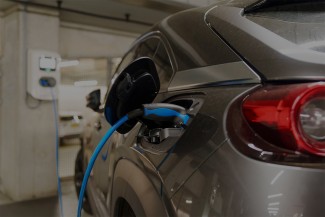Key Findings
|
This report examines key factors influencing EV charger installation in multifamily affordable housing (MFAH) and offers recommendations for advancing EV charging access in the affordable housing context. Our findings are based on a series of 10 qualitative interviews with affordable housing developers who have direct experience with decisions related to EV charger installation.
Notably, all developers interviewed had successfully installed EV chargers at one or more of their properties, offering important insights into the motivators, practical considerations, and barriers they overcame in shaping these decisions. These findings reflect a nuanced interplay between external drivers such as additional stakeholders, regulatory mandates, market trends, and funding opportunities as well as internal challenges including operational management, construction timelines, and budgetary constraints.
Learnings and takeaways
Partnerships: Collaborators play a critical role in offsetting costs, providing infrastructure, and offering expertise. By leveraging partnerships, developers can better navigate the complexities of EV charger installation and management.
Perceptions and knowledge gaps: Developers face challenges when making decisions on EV charging infrastructure early in the project timeline without sufficient knowledge and expertise, often resulting in overlooked operational questions, such as charger access policies, cost recovery strategies, and energy management considerations, which can create barriers during implementation.
Codes: Well-designed regulatory frameworks can be a powerful motivator for EV infrastructure adoption, but regulatory requirements alone are likely insufficient. Regulation should be exemption-proof or exemption-resistant and should be accompanied by attractive incentives. Codes requiring EV readiness or capability, but not necessarily full charger installation, can help future-proof properties while minimizing costs for developers over the long term. When thoughtfully implemented, such regulations can shift developer perceptions over time, transforming EV infrastructure requirements from compliance obligations into recognized best practices.
Funding: Funding requirements for Low-Income Housing Tax Credits (LIHTC) and additional sources of funding in developers’ overall capital stack strongly drive EV charger installation, as developers include EV infrastructure to meet eligibility criteria and stay competitive for limited financial resources. However, burdensome application processes often deter developers, highlighting the need for streamlined procedures, bundled incentives, and reduced administrative hurdles to make funding opportunities more accessible and appealing.
Recommendations
This report includes actionable strategies to encourage further EV charging infrastructure installation in MFAH at the time of construction across the following key stakeholders.
Policymakers: Establish minimum standards for EV readiness in new affordable housing developments, focusing on exemption-resistant requirements and pairing mandates with attractive incentives.
Program designers and funders: Design grant opportunities that actively promote partnerships, helping developers share administrative burdens and navigate complex funding processes more effectively. Restructure funding opportunities to be less prescriptive, streamline application processes, support EV energy management systems (also known as smart chargers), and consider bundling incentives for EV chargers across projects as well as with other sustainable infrastructure, such as solar power.
State energy offices: Assist developers in identifying overlooked EV charging considerations early in their planning process by providing resources, hands-on assistance, or referrals to consultants or expert partners to ensure EV charger management and operations impacts are anticipated and minimized.
Utilities: Provide developers with clear, transparent guidance on technical requirements and constraints early in their planning processes. Avoid postponing meaningful engagement until construction begins, as early and responsive coordination helps developers maintain flexibility and prevent delays that could negatively impact EV charging outcomes and building energization timelines.
Advocates: Focus messaging on emphasizing the inevitability of EV adoption and the financial benefits of early action. Frame EV readiness as a proactive measure to future-proof properties, meet tenant expectations, and avoid costly retrofits, supporting this message with data on local adoption trends and long-term payoffs to strengthen the message.
Download the report
| Suggested Citation |
Lewallen, Grace and Peter Huether. 2025. Expanding EV Charging in Multifamily Affordable Housing: Insights and Strategies. Washington, DC: ACEEE. www.aceee.org/research-report/t2501. |





